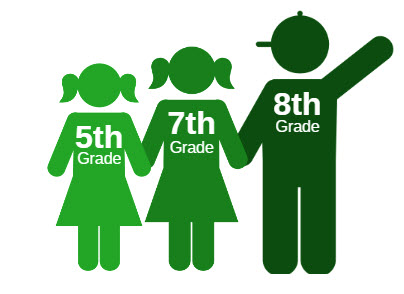The Importance of Early Intervention for Scoliosis
Posted on
With scoliosis, as with many other medical conditions, the earlier it is caught and treated, the better the chance for a successful outcome.
Scoliosis is a musculoskeletal disorder in which there is a sideways (lateral) curvature and rotation of the spine. Scoliosis can affect any age group and be caused by a variety of factors, but the most common type is adolescent idiopathic scoliosis or AIS.
AIS occurs in about 2%-4% of children (mostly girls), is diagnosed between the ages of 10 and 17, and has no known cause.
When identified early, AIS can be treated with bracing to prevent the curve from worsening and in some cases improve it. Time in the brace and in-brace reduction of the curve have been shown to be predictors of success. This is why Boston O&P’s scoliosis program, which includes the Boston Brace, Boston Brace 3D, the Boston Night Shift, and the Boston RC, includes monitoring the in-brace correction and the use of the Boston Sensor to objectively monitor wear time.
Left untreated, some curves will progress and could lead to the need for surgery. The more extreme the curve, the less likely it will stabilize and the more likely it will require surgery.
So how do you identify scoliosis in its early stages? First, your child’s pediatrician should check for any unusual spinal curvature as part of their annual exams. In addition, your school may have a program in place to screen children at certain points in time.
Scoliosis Screening: What You Need to Know
 The Scoliosis Research Society, American Academy of Orthopaedic Surgeons, Pediatric Orthopaedic Society of North America, and American Academy of Pediatrics all recommend that girls be screened for scoliosis twice, at ages 10 and 12 (grades 5 and 7), and boys once at age 13 or 14 years (grades 8 or 9).
The Scoliosis Research Society, American Academy of Orthopaedic Surgeons, Pediatric Orthopaedic Society of North America, and American Academy of Pediatrics all recommend that girls be screened for scoliosis twice, at ages 10 and 12 (grades 5 and 7), and boys once at age 13 or 14 years (grades 8 or 9).
In a scoliosis screening, the doctor will ask your child to stand in front of them so they can check for any asymmetries in the shoulders, legs, pelvis, or torso. They then will ask them to bend over with their arms hanging down, a position that makes a spinal curve more apparent. This is called an Adam’s Forward Bend test.
Many schools also do regular scoliosis screenings, which in some cases are required by law. In Connecticut, for example, the Connecticut State Department of Education mandates that scoliosis screenings be conducted by the school nurse in 5th and 7th grade for female students and 8th grade for male students. Massachusetts also requires scoliosis screening, in grades 5 and 9.
If your child’s school does not perform scoliosis screenings, or if you are concerned your child may have scoliosis, you can conduct a simple at-home test.
While wearing undergarments or a swimsuit, have your child stand with their back facing you. Look for any asymmetries, such as uneven shoulders, one shoulder blade sitting higher or protruding more than the other, one hip sitting higher than the other or one leg appearing longer than the other. Then ask them to bend forward with their arms by their side and look for ribs protruding on one side more than the other or a prominence on one side of the lower back
 If you notice any of these indicators, make an appointment with your child’s pediatrician for a more comprehensive examination. If the physician sees signs of scoliosis, they will usually refer you to see an orthopedic specialist.
If you notice any of these indicators, make an appointment with your child’s pediatrician for a more comprehensive examination. If the physician sees signs of scoliosis, they will usually refer you to see an orthopedic specialist.
Based on the patient’s age, amount of growth remaining, and degree and pattern of the curve, the doctor may recommend observation, physical therapy, bracing, or surgery. Identifying signs of scoliosis early will enable your doctors to determine the best treatment for the most positive outcome.

